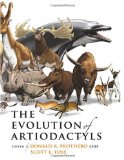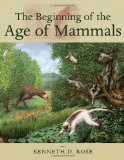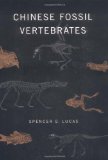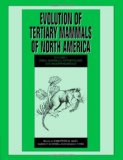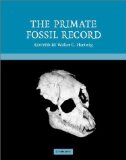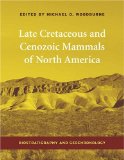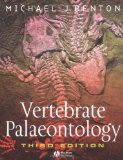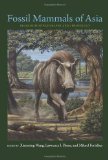Fossil vertebrates
- 200 Years of Vertebrate Paleoichnology
- A fossil primate of uncertain affinities from the earliest late Eocene of Egypt

- A Manual of the Anatomy of Vertebrated Animals (1881)
- A method for improved identification of postcrania from mammalian fossil assemblages: multivariate discriminant function analysis of camelid astragali

- A New Occurrence of Paleocene Mammals in the Evanston Formation, Southwestern Wyoming

- A new species of glirid rodent Vasseuromys from the Aragonian (Miocene) of the Ebro Basin (north−eastern Spain)

- A Revision of the Murinae (Rodentia, Mammalia) of Kohfidisch (Upper-Miocene, Burgenland, Austria)

- A study of the propodial morphology on Late Jurassic plesiosaurs from Spitsbergen

- American Society of Mammalogists
- Amphibia of Enspel (Late Oligocene, Germany)

- An Early Miocene microtoid cricetid rodent from the Junggar Basin of Xinjiang, China

- An electronic database for the late Quaternary distribution of mammal species in the United States
- An overview of the anuran fossil record

- Anatomy, death, and preservation of a woolly mammoth (Mammuthus primigenius) calf, Yamal Peninsula, northwest Siberia

- At the feet of the dinosaurs: the early history and radiation of lizards

- Australia's Giant Animals - The Megafauna
- Australia's Lost Kingdoms - Fascinating animal facts
- Australian Mesozoic Marine Reptiles
- B3405 Vertebrate Zoology
- Bat remains (Mammalia, Chiroptera) from the Middle Pleistocene site of Qesem Cave, Israel, with the first Pleistocene record of Fruit Bats in the Mediterranean region

- BBC - Walking with Beasts
- Biochronology of the Plio-Pleistocene Terrestrial mammals of Sardinia: The state of the art

- Bone microstructure and growth patterns of early mammals

- Carnivorous dinocephalian from the Middle Permian of Brazil and tetrapod dispersal in Pangaea

- Cenozoic Mammals of Land and Sea: Tributes to the Career of Clayton E. Ray

- Charles University Prague, Czech Republic - Palaeoherpetology and Evolutionary Morphology Group
- Chinese Academy of Sciences - Institute of Vertebrate Paleontology and Paleoanthropology
- Collection of Cenozoic mammals from Uruguay
- Comparisons, Homology and Phylogeny of Vertebrates
- Cretaceous Anurans from Central Asia

- Database of Lower Vertebrates - fossil Fishes, Amphibians, Reptiles from Neogene of Eurasia
- Descriptive and Comparative Osteology of the Oldest Fossil Squirrel, Protosciurus (Rodentia: Sciuridae)

- Digital Library of Vertebrate Morphology - It currently serves high-resolution X-ray CT-generated imagery of the skulls of 37 vertebrate species, including Recent species and important fossils.
- Dispersals of placental carnivorous mammals (Carnivoramorpha, Oxyaenodonta & Hyaenodonta) near the Paleocene-Eocene boundary: a climatic and almost worldwide story

- Diversity of mammals in the Neogene of Europe: Comparing data quality of large and small mammals in the NOW database

- Dynasties of Stone- The Paleo-illustration of Kelly Taylor - Dinosaur art - Extinct mammals - Paleozoic's
- Earliest Cretaceous mammals from the western United States

- Early Eocene frogs from Vastan Lignite Mine, Gujarat, India

- Early Toringian small mammals fauna from Fontana Marella cave (Varese, Lombardy, North Italy)

- Early Vertebrate Groups & Systematics
- Eemian mammal fauna of central Europe

- Eurasian large mammal dynamics in response to changing environments during the Late Neogene
- Fossil Bones In The Coso Range, California
- Fossil Mammal Hall
- Fossil record of early tetrapods: worker effort, and the end-Permian mass extinction

- Fossil record of the Eurasian Neogene insectivores (Erinaceomorpha, Soricomorpha, Mammalia)
- Fossil Record of the Vertebrates
- Fossil Synapsids
- Fossil tetrapods: stratigraphic, geologic and ecological data
- Fossil Vertebrates from the Bahamas

- Fossilien aus der Grube Messel
- Fossils explained 34: Crocodilians

- Fossils explained 48: Placodonts

- Fossils explained 51: Sloths

- Giant Camels from the Cenozoic of North America

- Ice Age Mammals
- In the shadow of bovids: suids, cervids and giraffids from the Plio-Pleistocene of Greece

- Krasiejow
- Larval development in Oligocene palaeobatrachid frogs

- Late Cenozoic History of the Genus Micromys (Mammalia, Rodentia) in Central Europe

- Late Glacial and Holocene micromammals of northeastern Europe

- Late Pleistocene Rodents (mammalia: Rodentia) From The Baranica Cave Near Knjazevac (eastern Serbia): Systematics And Palaeoecology

- Lizards and amphisbaenians (Reptilia, Squamata) from the late Eocene of Sossís (Catalonia, Spain)

- Macroevolutionary and morphofunctional patterns in theropod skulls: A morphometric approach

- Major Features of Vertebrate Evolution
- Mammalian Faunal Zones of the Bridger Middle Eocene

- Mammals troughout time
- Marine and terrestrial vertebrates from the Middle Miocene of Grund (Lower Austria)

- Marmarth Research Foundation in the Hell Creek Formation of North Dakota
- Messel Pit Fossil Site
- Mesozoic Anurans

- Mesozoic Eucynodonts
- Mesozoic Vertebrates from the Upper Blue Nile Gorge, Ethiopia
- Micromammalian faunas from the Middle Miocene (Middle Aragonian) of the Tudela Formation (Ebro Basin, Spain)

- Middle-late Miocene snakes from the Pannonian Basin

- Milano University - Vertebrate palaeontology
- Miocene of Western Asia; Fossil mammals at the crossroads of faunal provinces and climate regimes
- Miocene rodent evolution and migration. Muroidea from Pakistan, Turkey and Northern Africa

- Nature of the fossil record of Neogene insectivores

- Nebraska University State Museum - Vertebrate Paleontology
- Neogene mammal localities of Greece: Faunas, chronology and biostratigraphy

- Neoteny and paedomorphosis as evolutionary factors in Tertiary Amphibia

- New data on Eomyidae and Gliridae (Rodentia, Mammalia) from the Late Miocene of Austria

- North American Mammalian Paleofaunal Database Search Engine
- North American Eocene Sea Cows (Mammalia: Sirenia)

- Notes about the parallels in evolution of the Pleistocene cervids from Greece (Crete, Kassos and Karpathos), Japan (the Ryukyu-islands) and Philippines (Masbate)

- NOW - Neogene Mammal Database
- Never Mind the Dinosaurs! - Other Mesozoic Life
- New data on Eomyidae and Gliridae (Rodentia, Mammalia) from the Late Miocene of Austria

- Oceans of Kansas
- Oldest North American primate and mammalian biogeography during the Paleocene–Eocene Thermal Maximum

- Origin of Rodents
- Palaeozoic Microvertebrates
- Paleocene mammals of the world
- Paleoneurology
- Peabody Museum, Yale: Vertebrate Paleontology
- Plesiosaur Site
- Prehistoric Data Files - The purpose of these pages is to present general data concerning prehistoric animals
- Preserving Vertebrate Fossils: Notes From The Laboratory
- Prey deposits and den sites of the Upper Pleistocene hyena Crocuta crocuta spelaea (Goldfuss, 1823) in horizontal and vertical caves of the Bohemian Karst (Czech Republic)

- Radiocarbon chronology of Late Pleistocene large mammal faunas from the Pannonian basin (Hungary)

- Replication Skulls
- Review of fossil Caudata of Europe

- Revision of the early Middle Pleistocene bears (Ursidae, Mammalia) of Central Europe, with special respect to possible co-occurrence of spelaeoid and arctoid lineages

- Rodent faunas of the Mio-Pliocene continental sediments of the Teruel-Alfambra region, Spain
- Rodents of the Bridgerian (Middle Eocene) Elderberry Canyon Local Fauna of Eastern Nevada

- Sabretooths!
- Sciuridae, Gliridae and Eomyidae (Rodentia, Mammalia) from the Middle Miocene of St. Stefan in the Gratkorn Basin (Styria, Austria)

- Sirenian Metaxytherium (Mammalia: Dugongidae) in the Badenian (Middle Miocene) of Central Europe

- Skull of the neotenous salamandrid amphibian Triturus alpestris and abbreviated developments in the Tertiary Salamandridae

- Small-sized Rhinoceroses From The Late Pleistocene Of Apulia (Southern Italy)

- Society of Vertebrate Paleontology
- Soricids (Soricidae, Mammalia) from Early Oligocene fissure fillings in South Germany – and a phylogenetic analysis of the Heterosoricinae

- Stephanorhinus Etruscus (falconer, 1868) From Pirro Nord (Apricena, Foggia, Southern Italy) With Notes On The Other Late Early Pleistocene Rhinoceros Remains Of Italy

- Stone-splitters And Expansive Demolition Agents: Breaking Big Rocks With Little Effort On Vertebrate Paleontological Excavations

- Succession of rodent faunas from the Mio/Pliocene lacustrine deposits of the Florina-Ptolemais-Servia Basin (Greece)

- Systematics and dental microwear of the late Miocene Gliridae (Rodentia, Mammalia) from Hayranlı, Anatolia: Implications for paleoecology and paleobiodiversity

- Taxonomic re-assessment and phylogenetic relationships of Miocene homonymously spiral-horned antelopes

- Taxonomy and distribution of Tertiary discoglossids (Anura) of the genus Latonia v.Meyer, 1843

- Tragulidae (Artiodactyla, Ruminantia) from the Middle Miocene Chinji Formation of Pakistan

- Transitional Fossils and the Origin of Turtles

- Upper Pleistocene Panthera leo spelaea (Goldfuss, 1810) skeleton remains from Praha-Podbaba and other lion finds from loess and river terrace sites in Central Bohemia (Czech Republic)

- Upper Pleistocene Small mammal fauna from Salnova quarry (Saltrio-Varese-Northwestern Lombardy): paleoenvironmental reconstruction and Chionomys nivalis population study

- Vertebrate Natural History (WMAN 224)
- Vertebrate Paleontologists
- Virtual Palaeontology: Gait Reconstruction of Extinct Vertebrates Using High Performance Computing

Books about fossil vertebrates
